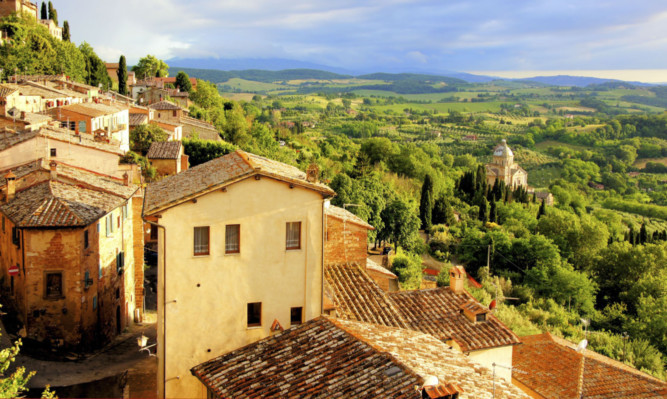
“Lunigiana in the very north of the region simply blew me away.”
Tuscany is one of my favourite places in the world.
The only trouble is that so many others share my enthusiasm and hence the honeypots of Lucca, Siena and Florence can be busy and expensive.
Imagine my delight then when I recently visited a part of Tuscany that was quiet and economically priced. Lunigiana in the very north of the region simply blew me away.
This is a truly unspoilt area, defined by the Appennine mountain range to the east (often referred to as the ‘back bone of Italy’), the world famous Carrara marble Apuane mountains to the south and the Ligurian Riviera to the west.
It’s ideal for visiting the coast, bathing in the local natural baths, walking in the countryside or simply wandering around the nearby medieval cities and towns.
Lunigiana is sometimes described as ‘the land of a hundred castles’.
Among the most enchanting are Verrucola Castle near Fivizzano (very close to the villa we rented), Piagnaro Castle in Pontremoli, Brunella Fortress in Aulla and Malaspina Castle in Fosdinovo.
Along the old pilgrims’ roads there you can enjoy all the little villages full of character and charm just don’t get stuck in the tiny narrow lanes that pass for roads, as we did in Sassalbo.
Some of the most characteristic hamlets are Filetto, Malgrate, Bagnone, Filattiera, Mulazzo, Fivizzano, Pontremoli, Licciana and Villafranca.
I love the relaxation of having a villa and I found one through the excellent website holidaylettings.co.uk. My choice was Villa Rosa in Spicciano where the ‘real Italy’ can be experienced.
Surrounded by olive groves, grape vines and apple orchards, it is the Tuscany that people dream about.
Quiet Spicciano has a population of only 40 people and there are no shops there, but it is a five-minute drive from Fivizzano, where stores, bars and restaurants can be found.
Villa Rosa has a beautiful terrace protected by a wisteria pergola at the back while the garden is the ideal place for alfresco dining.
The house has enough space to sleep 10 comfortably (12 at a stretch) and the en-suite bedrooms, public rooms and swimming pool got a thumbs-up all round.
Tastefully renovated and beautifully decorated, it was one of the most comfortable villas I’ve ever stayed in. And the views, oh the views. Just breathtaking.
The grounds also offer a lovely stone courtyard, a barn and another outbuilding which is now a games room, with table tennis table.
The private pool is separated from the rest of the garden by a wooden fence to make it safe for kids and the garden also features a trampoline with enclosure.
Fivizzano itself is a sweet little town which saw prosperity under the Medici family of Florence.
The town contains elegant Renaissance palaces and churches and the notable Piazza Medicea with its beautiful central fountain.
Parma is approximately an hour north of the region while Pisa and Lucca are about an hour south or, if you wish to visit Florence, it can be reached within a couple of hours by car.
Lunigiana itself has taken the best food from Tuscany and the two bordering regions of Liguria and Emilia Romagna.
The local dishes are made from very simple ingredients, such as the delicious vegetable pies that use edible field grasses.
A large part of Lunigiana is covered by chestnut woods and chestnuts at one time constituted the locals’ livelihood.
There are many local dishes where the main ingredient is chestnut flour, such as pattona, gnocchi mesci and the focaccia made in Pontremoli.
The Strada del Vino dei Colli di Candia e di Lunigiana (the wine route) winds along spectacular hilltop panoramas overlooking the Mediterranean Sea and vine-speckled landscape.
The two most characteristic wines of this region are the Candia dei Colli Apuani and Colli di Luni vintages.
We found a local wine store (Enoteca Vino Estremo) selling lovely produce for under three euros a bottle!
Dividing our time between a mixture of eating out (great pizzas in Fivizzano for six euros in Pizzeria Medicea) and picking up ready-cooked dishes made by a local restaurant, my little group of pals who rented it out with hubbie and I spent 300 euros a week all-in per couple and we didn’t skimp on food or wine.

Enjoy the convenience of having The Sunday Post delivered as a digital ePaper straight to your smartphone, tablet or computer.
Subscribe for only £5.49 a month and enjoy all the benefits of the printed paper as a digital replica.
Subscribe